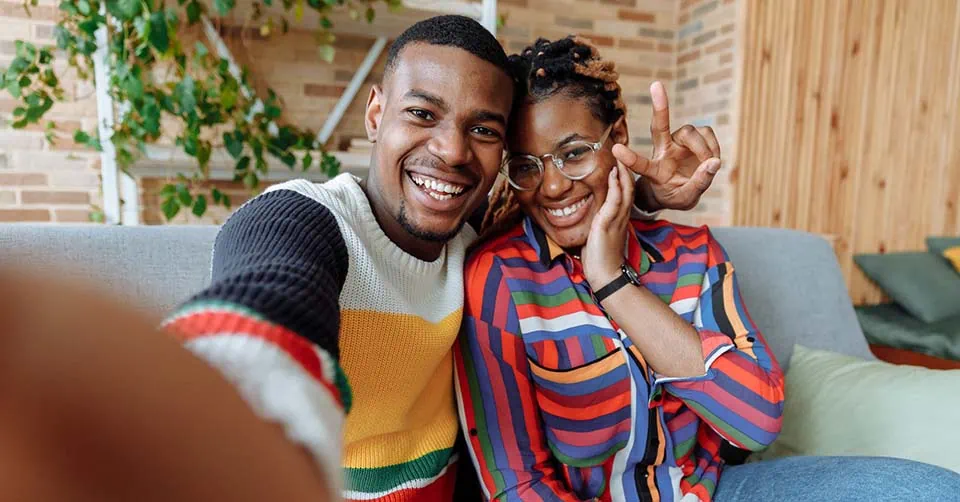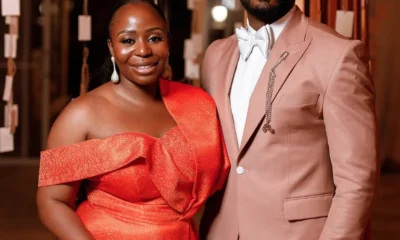OPINION
Top 10 Most Beautiful Cities In The World
Published
11 months agoon

Ranking cities based on beauty can be challenging. Travellers may prefer exploring ancient wonders and museums or being captivated by modern skylines and architecture. Still, there are many beautiful cities in the world.
While personal preferences vary, some cities stand out for their exceptional beauty due to historical charm or natural surroundings. These cities should be on everyone’s bucket list. If you enjoy urban pleasures, here are my top 10 favourite cities in the world (though this list is not exhaustive).
1. Cape Town (South Africa)
Cape Town, South Africa, is a stunning city with some of the world’s most amazing beaches, beautiful mountains, and picturesque vineyard-covered hills.
It offers spectacular drives and a lot of trendy bars and fine-dining restaurants. The city is renowned for its exceptional accommodations and world-class service, making it a top-notch destination.
Visitors often find Cape Town to be a picture-perfect city and a place they want to return to. The best time to visit is during the hot, dry summer months from late October to March or April, with peak temperatures in December to February, ideal for a beach holiday.
2. Vancouver (Canada)
Vancouver, situated between the Coast Mountains and the Pacific Ocean, is a unique combination of languages, customs, beliefs, art forms, music, dance, storytelling, traditional practices, and knowledge systems that have been passed down through generations.
It boasts natural beauty, with spectacular mountains, wildlife-filled waters, and lush rainforests. The city itself is adorned with ultramodern glass skyscrapers reflecting the stunning surroundings. Vancouver’s friendly residents contribute to a relaxed atmosphere, making it an incredible destination, provided it’s not raining.
For the best weather, plan your visit between June and September, as Vancouver tends to experience significant rainfall in autumn, winter, and spring.

3. New York (USA)
New York City, known as “The Big Apple,” is the ultimate cosmopolitan destination, symbolising the epitome of urban living. It offers unparalleled experiences, from exploring world-class museums and indulging in extensive shopping to attending top-notch performances and facing tough choices in the diverse dining scene. While New York can be expensive for visitors, there are also numerous free activities to enjoy.
The best time to visit is flexible, as each season in the city provides compelling reasons to explore. Early fall brings crisp breezes and comfortable temperatures, making it an ideal time to visit.
Winter offers better hotel rates, despite the cold. Spring is delightful, with New Yorkers celebrating the thaw by engaging in outdoor activities. Summer, however, can be intensely hot; for that, you could avoid July and August.

4. Rome (Italy)
Rome, situated on seven hills with a view of the Tiber River, is a city rich in ancient monuments, showcasing grand classical architecture amidst some of the world’s most beautiful squares and avenues. While famous landmarks like Vatican City, the Colosseum, and Piazza Navona attract visitors, exploring the lesser-known Trastevere district is a must. Trastevere is filled with faded palaces, charming streets, and homes adorned with flower boxes.
The best times to visit Rome are spring (April to June) and autumn (late September to October), offering mild temperatures, sunny days, and fewer crowds. Summer sees an influx of visitors and uncomfortably hot weather, while winters can be surprisingly cold, wet, and grey.

5. San Francisco (USA)
San Francisco, often called the Bay City, is cherished by its residents for its breathtaking setting, boasting one of the world’s most stunning bays. With its artsy, bohemian vibe, the city features 43 hills ranging from 200 to 938 feet, providing spectacular views.
Key attractions include iconic cable cars, magnificent bridges, the notorious Alcatraz, the foodie haven Ferry Building, and the lively sea lions at Pier 39. Exploring this magnificent city is best done on a bike.
The optimal time to visit San Francisco is in the autumn (September to November), which offers warm temperatures and sunny days. Spring is also favourable, although breezes may have a bit more chill.
Summer experiences a surge in tourism but is not ideal due to frequent fog, making days chilly and views obscured. Winter brings rain and cold temperatures, despite being in California.

6. Rio De Janeiro (Brazil)
According to a Brazilian saying, “God made the world in six days; the seventh he devoted to Rio.” Rio de Janeiro, home of Samba and the Caipirinha cocktail, is endowed with one of the world’s most dramatic and beautiful settings.
Visitors standing by the Corcovado statue or atop Sugarloaf Mountain are treated to an exciting panorama where the deep blue of the Atlantic Ocean meets the bright white sandy beaches and lush green tropical vegetation. Locals fondly refer to it as “the marvellous city.”
The optimal time to visit Rio de Janeiro is during the spring months of September and October, which offer dry, sunny, and warm weather. Summers are hot with frequent rainfall, making it suitable for attending the New Year’s Eve celebrations on Copacabana Beach or the legendary carnival celebrations in February. Winters are colder but mostly dry and sunny, though the beach may be off-limits on some days.

7. Paris (France)
Paris, with its monumental squares, ancient churches, renowned boulevards, the romantic Seine, and charming Montmartre streets, stands out as the most glamorous and elegant city.
The City of Light has been an inspiration for painters, sculptors, writers, poets, and composers, influencing major world capitals, each claiming its own version of the Champs-Elysées. Cruising the Seine or enjoying a café terrace view reveals why Paris captivates so many with its beauty.
Get the latest and greatest updates right away! Join our exclusive WhatsApp channel and never miss out on exciting news again.
The best times to visit Paris are in the spring (April to June) or fall (September to October). Recent years have witnessed extreme temperatures in both summer and winter, possibly due to global warming. High temperatures, coupled with air pollution, make summer visits to Paris uncomfortable.
8. Hong Kong (China)
Undoubtedly, Hong Kong, often referred to as the “Pearl of the Orient,” is one of the world’s most photographed and stunning city skylines. The combination of towering skyscrapers and futuristic buildings against a lush mountain backdrop creates an unparalleled urban scenery.
Beyond its skyline, Hong Kong is well known for its vibrant lifestyle, friendly locals, splendid harbour, extensive shopping options, and a wide range of restaurants and cuisines.
The best time to visit is from the middle of September to the end of February, just to enjoy a mild climate with warm and sunny days. From May to mid-September, the weather can be hot, wet, and humid, with August being the wettest month and the peak of the typhoon season.

9. Prague (Czech Republic)
Prague, often called “the city of the thousand spires,” is known for its well-preserved historical monuments spanning various periods. The city’s most famous attractions include the elegant Charles Bridge, picturesque Old Town Square, and the impressive Prague Castle, all connected by cobblestone streets and atmospheric alleyways that enhance the overall charm.
A good time to visit Prague is during the spring and fall, when the skies are clear, temperatures are mild, and there are fewer tourists. Summer months can be hot but manageable; however, it’s the high season, leading to skyrocketing hotel rates. For a unique experience of a snow-covered Prague without crowds, consider a romantic winter trip.
10. Amsterdam (The Netherlands)
Amsterdam, with its main canals adorned by thousands of buildings, treats each structure as a monument meticulously repurposed as apartments, offices, cafés, restaurants, or even brothels. This collective architectural diversity contributes to the city’s aesthetic uniformity, making Amsterdam one of the most beautiful cities globally.
It features a charming interplay of bridges and canals, picturesque cobbled streets, elegant architecture, and a multitude of bicycles. Standout attractions include the Rijksmuseum, the Van Gogh Museum, and the iconic Anne Frank House.
For the best experience, plan your visit to Amsterdam between April and May (spring) or September through November (autumn), just before or after the peak summer tourist season. This allows you to avoid crowds, enjoy milder temperatures (given the city’s unpredictable weather), and immerse yourself in Amsterdam’s laid-back ambience, as the locals do.
Now that we have explored these beautiful cities, take your time to plan out which to visit first and when to visit. If you experience travel anxiety, you will find this article helpful.
If you enjoyed this article, read more here.
You may like

As a Nigerian adult, you understand that December isn’t merely a festive season—it’s the ultimate billing battlefield. In this case, knowing how to avoid billing this December can be your financial lifeline.
The month transforms into an elaborate financial obstacle course where every social engagement becomes a potential wallet-draining experience.
Picture this: you’re suddenly expected to match expensive aso-ebi for your partner’s distant cousin’s wedding, shell out cash for elaborate office hangout festivities, purchase thoughtful gifts for an extensive network of friends and family, grab concert tickets for the hottest “detty December” events, and somehow maintain some semblance of financial sanity.
Each commitment is strategically designed to empty your bank account, with Sapa waiting eagerly in the wings to completely demolish your January savings.
The universe seems to have conspired with social expectations to orchestrate a complex financial challenge, transforming December into an unofficial billing Olympics where your wallet is the primary competitor.
But here’s the good news: you can become a strategic “shege survivor” by mastering how to avoid billing this December with calculated precision and smart financial manoeuvres.
In this comprehensive survival guide, we’ll explore tactical approaches to navigate the treacherous December spending landscape, ensuring you emerge victorious without sacrificing your financial stability or social reputation. Prepare to become the ultimate December financial ninja!
1. Always Complain Like It’s Your Birthright
Nobody wants to bill someone who complains every five minutes. If you consistently make a point of complaining about your financial situation whenever you get the chance, the likelihood of being asked for money will drop drastically.
The only exception is if you have people around you who are heartless and completely audacious—if that’s the case, there’s a solution in step two.
2. Trade Your Flashy Phone for a ‘Torchlight’
Do you see that iPhone 14 Pro Max of yours? That big phone that attracts unnecessary attention? It’s essentially a billboard screaming, “I’m open for billing!”
To avoid billing, sell it and invest the money in preparing for next year’s challenges. No one will suspect you of being a “billionaire in transit” if you’re using a humble Nokia torchlight or an old-school TECNO phone.
Picture this: someone asking you for money while you’re holding a phone that looks like it belongs in 2003. They might even feel sorry for you and give you some spare change.
The goal here is to avoid billing by making it clear you’re not the person with deep pockets.
3. Buy Okrika Clothes
As the saying goes at the “Okrika” stores, “na mumu dey go boutique.” Avoid billing by steering clear of designer clothes that scream wealth and immediately mark you as a target for requests.
Instead, buy “Okrika” (secondhand) clothes and proudly share how much you paid when people compliment you. Tell them, “You won’t believe how much this outfit cost; it was just 500 Naira!” and make sure to add, “I’m making do with the little I have…”
This strategy helps position you as the king or queen of thrift, ensuring that nobody dares to ask you for money or extravagant contributions.
4. Avoid Calls Like a Pro
Screen all your calls, and be strategic about who you answer. The call from your cousin in the village? We both know it’s not “Merry Christmas” they’re about to say—it’s more likely “I need money for the New Year.”
To avoid billing, activate your Do Not Disturb (DND) mode and only return calls from people who won’t ask for a handout.
If you must respond, use WhatsApp messages so you can carefully craft your excuses without feeling pressured.
5. Go Solo: Break Up With Your Partner
Let’s be real—being in a relationship is one of the major sources of billing in December. To avoid billing and enjoy some peace of mind, consider going solo this season.
Enjoy your money without worrying about shared expenses, and enter the New Year without emotional or financial baggage. You deserve it!
When you want to avoid billing in December, it isn’t just about saving money—it’s about preserving your sanity and entering January without the financial hangover.
These strategies will help you avoid billing and ensure a peaceful, financially secure holiday season. When you’re sipping zobo in the comfort of your home instead of crying over debt recovery meetings, remember to thank me.
If you found these tips helpful and want more, visit here. And remember not to fall in love this December!
OPINION
11 Ways To Build Emotional Connection With Your Woman
Published
2 weeks agoon
December 1, 2024
Building a deep emotional connection is crucial for lasting romantic relationships. Understanding how to build an emotional connection with a woman requires genuine effort, empathy, and consistent communication.
Building a strong emotional connection with your woman is more than just physical attraction or shared interests. Emotional intimacy is the glue that holds couples together.
Here are eleven practical ways to foster this deep connection:
1. Prioritise Quality Time
How to build emotional connection with a woman? One of the most effective ways is to prioritise quality time together. This means putting away distractions like phones and focusing on each other.
Engage in activities you both enjoy, whether it’s a shared hobby, a simple conversation, or a romantic dinner. These moments create lasting memories and strengthen your bond.

2. Active Listening
To truly understand your woman, you must listen actively. This involves paying full attention, asking clarifying questions, and reflecting on her feelings. Active listening goes beyond merely hearing words.
Avoid interrupting or formulating your response while she’s speaking. When learning how to build emotional connection with a woman, focus entirely on her when she speaks. Show that you value her thoughts and emotions.
Maintain eye contact. Put away digital devices. Avoid interrupting. Reflect back on what you’ve heard to demonstrate understanding. Show genuine interest in her experiences.
Ask follow-up questions that reveal you’re truly engaged. Validate her feelings without judgment. This approach creates a safe emotional space where she feels heard and respected.
3. Express Gratitude and Appreciation
Show your appreciation for your woman through words and actions. A simple “thank you” or a heartfelt compliment can go a long way.
Recognise her efforts, both big and small, and express gratitude for her presence in your life. This positive reinforcement strengthens your emotional connection.
4. Physical Touch and Emotional Affection
Physical touch is a powerful way to connect with your woman on an emotional level. This doesn’t necessarily mean intimate acts.
Simple gestures like holding hands, unexpected hugs, and gentle touches on the arm, hair, and neck can convey love and affection. These physical cues deepen your bond and create a sense of emotional security and intimacy.
Understanding how to build emotional connection with a woman involves recognising her unique affection preferences. Some women appreciate frequent physical contact, while others prefer occasional, meaningful gestures.

5. Open and Intentional Communication
Open and honest communication is essential for a healthy relationship. Share your thoughts, feelings, and fears with vulnerability. Create a safe space where she can express herself without judgment. By being open and honest, you build trust and intimacy.
Communication is the cornerstone of emotional intimacy. Learn her communication style. Some women prefer direct conversations, while others appreciate subtle emotional nuance.
When discovering how to build emotional connection with a woman, communicate regularly and meaningfully. Share your thoughts, feelings, and daily experiences. Create moments of genuine conversation beyond surface-level interactions.
6. Surprise Her with Thoughtful Gestures
Small acts of kindness can have a significant impact on your emotional connection. Surprise her with a thoughtful gift, plan a romantic getaway, or simply leave a heartfelt note.
These unexpected gestures show that you care and are thinking of her.
7. Celebrate Milestones Together
Celebrate life’s milestones, both big and small, together. Whether it’s a birthday, an anniversary, or a personal achievement, these moments create shared experiences and strengthen your bond.
8. Express Vulnerability
Emotional connections deepen when partners share authentic feelings. Men often struggle with vulnerability, but it’s essential when understanding how to build an emotional connection with a woman. Share your fears, dreams, and personal challenges.
Demonstrate emotional intelligence by opening up about your inner world. Talk about your insecurities and past experiences. This transparency invites her to connect more deeply and builds mutual trust.
9. Show Consistent Emotional Support
Support goes beyond physical assistance. This means you have to prioritise her emotional landscape. Be present during her challenging times.
Offer comfort without attempting to fix everything. Listen empathetically. Validate her emotions. Demonstrate that you’re a reliable emotional anchor she can depend on during difficult moments.
10. Cultivate Shared Experiences
Shared experiences create emotional memories. Plan activities that allow genuine connection. Try new experiences together. Take classes, travel, or explore mutual interests.
These shared moments become emotional touchstones in your relationship. They create opportunities for deeper understanding and mutual growth when learning how to build emotional connection with a woman.

11. Practice Emotional Empathy
Empathy transforms relationships. Put yourself in her emotional shoes. Understand her perspective without judgment. Recognise her emotional triggers and respond with compassion.
When mastering how to build emotional connection with a woman, emotional intelligence becomes your greatest asset. Validate her feelings, even when they differ from your perspective.
Conclusion
Building an emotional connection requires continuous effort, patience, and genuine commitment. These strategies provide a roadmap for creating deeper, more meaningful romantic relationships.
Remember that every woman is unique. What works for one might not work perfectly for another. Stay adaptable, communicate openly, and approach emotional connection with sincerity and respect.
By implementing these strategies consistently, you’ll create a profound emotional bond that transcends surface-level interactions, fostering a relationship built on trust, understanding, and genuine love.
If you found this article helpful, click here to check out more.

Arguments in relationships test every couple’s communication skills. They reveal deeper emotional dynamics. Healthy partnerships transform conflicts into opportunities for understanding.
Navigate arguments in relationships with strategic approaches. Stop escalation before it destroys the connection. Recognize that disagreements happen naturally. Your response determines relationship quality.
These relationship arguments require emotional intelligence. Listen actively. Control reactive responses. Use compassionate language. Avoid accusatory statements. Show genuine respect.
Understand that arguments in relationships aren’t battles to win. They’re conversations to understand. Each disagreement offers a chance to strengthen bonds. Develop mutual empathy.
The final key to managing arguments in relationships involves staying calm. Take deep breaths. Pause when emotions run high. Focus on solutions, not problems.
Successful couples treat arguments as growth opportunities. They communicate openly and respect each other’s perspectives. They commit to mutual understanding.
Choose connection over being right. Transform conflicts into moments of intimacy and trust.
Below are 6 tips you can use to de-escalate arguments in relationships:
1. Take a Break
Arguments in relationships can quickly spiral out of control. When conversations become heated, take a strategic timeout. Step away from the intense moment.
Give yourself space to reset emotionally. Take a walk to clear your mind. Listen to calming music. Practice meditation techniques. Breathe deeply and center yourself.
The goal of taking a break during arguments in relationships is emotional regulation. Return to the conversation when both partners feel calm and rational. This approach prevents saying hurtful things in the heat of the moment.
2. Active Listening
Mastering active listening transforms arguments in relationships. When your partner speaks, give full attention. Silence your inner defensive voice. Avoid interrupting or preparing counterarguments. Focus entirely on understanding their perspective.
Ask clarifying questions. Repeat what you’ve heard to ensure comprehension. Show genuine interest in your partner’s feelings. Demonstrate that you value their emotional experience.
3. Use “I” Statements
Language matters in arguments in relationships. Replace blame with personal vulnerability. Instead of accusatory statements like “You always ignore me,” express your feelings directly. Say, “I feel lonely and disconnected when we don’t communicate.”
“I” statements reduce defensiveness. They invite empathy and understanding. They transform potential conflicts into opportunities for a deeper connection.
4. Avoid Personal Attacks
Arguments in relationships should never become character assassinations. Stick strictly to the current issue. Avoid bringing up past mistakes or criticizing your partner’s personality. Focus on resolving the specific problem at hand.
Maintain respect. Treat your partner with kindness, even during disagreements. Your goal is collaborative problem-solving, not winning a battle.
5. Find Common Ground
Every argument contains potential for understanding. Look for areas of agreement, no matter how small. Acknowledge shared feelings or goals. Build a bridge of mutual understanding.
Collaborative approaches transform arguments in relationships from confrontations to conversations. Work together as a team. Seek solutions that satisfy both partners.
6. Seek Professional Help
Persistent communication challenges require professional intervention. A qualified therapist can provide:
- Objective communication strategies
- Tools for emotional regulation
- Insights into underlying relationship dynamics
- Personalized conflict resolution techniques
Professional guidance helps couples break destructive communication patterns. It provides skills for healthier, more understanding relationships.
Transforming Conflicts
Arguments in relationships are growth opportunities. They test and strengthen emotional bonds. By approaching conflicts with empathy, respect, and strategic communication, couples can turn challenges into moments of deeper connection.
Disagreements are normal. Respect is essential. Love is a continuous journey of understanding.
Click here to read more articles on relationships.
Latest


UK Tightens Financial Requirements For 2025 Visa Applicants
The United Kingdom has introduced updated financial requirements for visa applicants in 2025, citing rising living costs and inflation as...


Something About Nigeria Drains Your Excellence – Adekunle Gold
Nigerian singer Adekunle Gold ignited widespread discussions online after openly expressing his frustrations with life in Nigeria. On December 17,...


Toyosi Etim-Effiong Says She Doesn’t Trust Her Husband 100%
Toyosi Etim-Effiong, the wife of Nigerian actor Daniel Etim-Effiong, recently stirred reactions by admitting that she does not completely trust...


How To Avoid Billing This December
As a Nigerian adult, you understand that December isn’t merely a festive season—it’s the ultimate billing battlefield. In this case,...


Ademola Lookman Named African Footballer Of The Year, Barbra Banda Picks Up Women’s Award
Ademola Lookman, 27, was awarded the prestigious African Footballer of the Year title by the Confederation of African Football (CAF)....


Davido To Headline UK Stadium Concert Alongside 50 Cent & Mary J Blige
Davido, one of Africa’s most successful music exports, will headline the highly anticipated 2025 concert alongside global icons 50 Cent...


Burna Boy Set To Release New Single, “Bundle” This December
Burna Boy is gearing up to release a new single, “Bundle,“ as he prepares to close out 2024 in grand style....


Comedian Bovi Criticises Nigerian Parents For Criminalising Dating Culture
Popular Nigerian comedian Bovi openly shared his views on Nigeria’s restrictive dating culture, highlighting its impact on relationships and marriages...


Nancy Isime Celebrates 33rd Birthday, Unveils New Mansion
Nollywood actress and media personality Nancy Isime celebrated her 33rd birthday in grand style, using the occasion to reflect on...


7 Facts About Samuel Nwajagu, Mister International 2024
In a groundbreaking moment for international pageantry, Nigerian contestant Samuel Nwajagu won the prestigious Mister International crown on December 14,...
-Ad-




“Gladiator II” Records ₦99.1 Million In Its Opening Weekend At The Nigerian Box Office

“Everybody Loves Jenifa” Can Beat ₦5 Billion – Funke Akindele

You Can Make Your Kunu Drink With This Simple Recipe

Skepta Graced Africa International Film Festival (AFRIFF) In Elegant Trad

“Family Gbese” Earns ₦28 Million In Box Office 2 Weeks After Its Release

“A Ghetto Love Story” Rakes Over ₦22 Million At Box Office In Its Opening Weekend

“The Interrogation Of Lotanna” Bags 6 Nominations At The FilmJoint Awards 2025

It Hurts – Don Jazzy On Not Having A Partner

Wizkid Releases His Highly Anticipated Album, “Morayo”

5 Fashion Mistakes Men Make That Women Find Unattractive
Trending
-

 MUSIC2 days ago
MUSIC2 days agoHere Are The Most Streamed Gospel Artists On Spotify Africa
-

 MUSIC6 days ago
MUSIC6 days agoShallipopi Confirms Split With Dapper Music, Accuses The Label Of Breach Of Trust
-

 NEWS2 days ago
NEWS2 days agoNNPC Slashes Petrol Prices Nationwide
-

 ENTERTAINMENT6 days ago
ENTERTAINMENT6 days agoActor Williams Uchemba And Wife Welcome Second Baby
-

 FAB FRESH1 day ago
FAB FRESH1 day agoBurna Boy Set To Release New Single, “Bundle” This December
-

 BEAUTY2 days ago
BEAUTY2 days agoNigerian Model, Samuel Nwajagu Becomes First African To Win Mister International Title
-

 SPORTS2 days ago
SPORTS2 days agoHarry Maguire Says Manchester United’s Win Over City Is The Start Of A ‘Positive Journey’
-

 ENTERTAINMENT2 days ago
ENTERTAINMENT2 days agoI Was Nigeria’s Sweetheart Until I Got Divorced – Tiwa Savage



